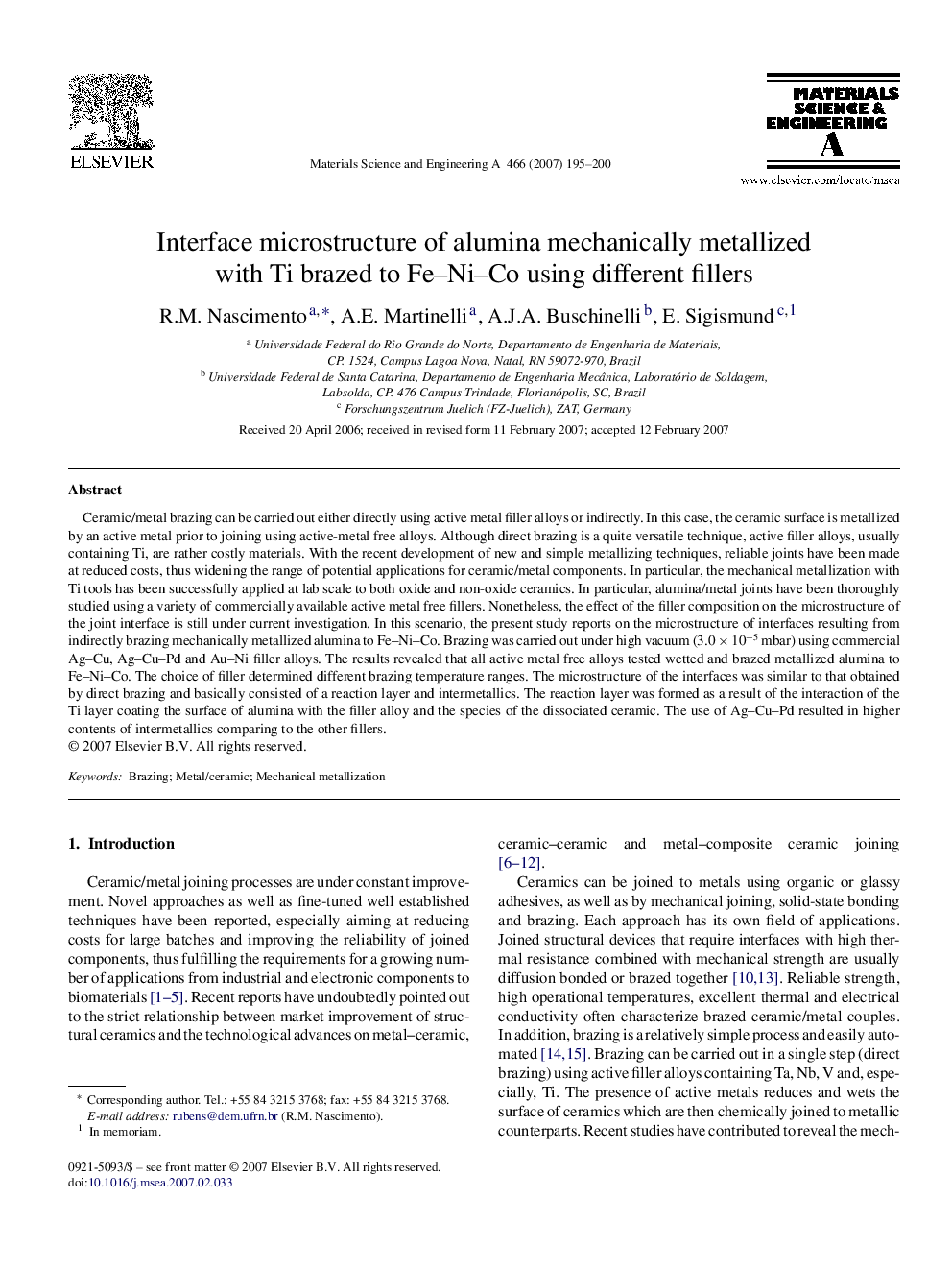| کد مقاله | کد نشریه | سال انتشار | مقاله انگلیسی | نسخه تمام متن |
|---|---|---|---|---|
| 1583658 | 1514888 | 2007 | 6 صفحه PDF | دانلود رایگان |

Ceramic/metal brazing can be carried out either directly using active metal filler alloys or indirectly. In this case, the ceramic surface is metallized by an active metal prior to joining using active-metal free alloys. Although direct brazing is a quite versatile technique, active filler alloys, usually containing Ti, are rather costly materials. With the recent development of new and simple metallizing techniques, reliable joints have been made at reduced costs, thus widening the range of potential applications for ceramic/metal components. In particular, the mechanical metallization with Ti tools has been successfully applied at lab scale to both oxide and non-oxide ceramics. In particular, alumina/metal joints have been thoroughly studied using a variety of commercially available active metal free fillers. Nonetheless, the effect of the filler composition on the microstructure of the joint interface is still under current investigation. In this scenario, the present study reports on the microstructure of interfaces resulting from indirectly brazing mechanically metallized alumina to Fe–Ni–Co. Brazing was carried out under high vacuum (3.0 × 10−5 mbar) using commercial Ag–Cu, Ag–Cu–Pd and Au–Ni filler alloys. The results revealed that all active metal free alloys tested wetted and brazed metallized alumina to Fe–Ni–Co. The choice of filler determined different brazing temperature ranges. The microstructure of the interfaces was similar to that obtained by direct brazing and basically consisted of a reaction layer and intermetallics. The reaction layer was formed as a result of the interaction of the Ti layer coating the surface of alumina with the filler alloy and the species of the dissociated ceramic. The use of Ag–Cu–Pd resulted in higher contents of intermetallics comparing to the other fillers.
Journal: Materials Science and Engineering: A - Volume 466, Issues 1–2, 25 September 2007, Pages 195–200